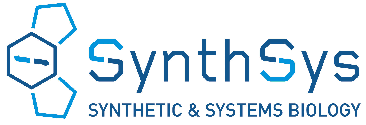The Millar research
group
www.amillar.org; Andrew's pages on
Edinburgh Research Explorer
![]()
News (old news is here)
|
BRASS is no longer available, BioDare2 is now online for rhythmic data analysis. | |
|
Yin Hoon and Daniel's Framework Model v2 links clock to outputs and biomass (bioRxiv 2017), for the first time in any organism | |
|
Peter and Andrew's review on governance of research networks (PMM 2017) | |
|
Argyris' new modelling language, Chromar (SASB2016) | |
|
A new website is in the works |
![]()
Biological Clocks
Plants, fungi, animals, some bacteria and archaea have internal, 24-hour clocks. These "circadian" clocks affect our lives in many ways, through industry, agriculture and human health.
Web tutorials on biological clocks: try these old pages first, if circadian clocks are new to you.
Our Research
Our research aims to understand how the circadian clock is constructed and adjusted, how it affects plant life and why the clock mechanisms are so complex. Among the cogs of the biological clockwork are a small set of genes that rhythmically regulate each other's activity. We study these "clock genes" in Arabidopsis, which is a small plant with a big following, and the marine alga Ostreococcus, which is one of the smallest eukaryotic cells. Molecular genetics and transgenic plants/algae help us by revealing rhythms that are usually invisible: we use a reporter gene called luciferase to send us video footage when other genes are active, like the 24-hour loop at the top of this page. We are also studying how biological rhythms benefit the organism by controlling metabolism, growth and seasonal flowering times, using quantitative timeseries experiments and mathematical modelling.
The circadian clock is an excellent system to develop new methods in Systems Biology, as we do with many collaborators in SynthSys. Mathematical modelling helps us to understand the complex data and to identify the principles behind the molecular detail. We were using the simpler clock of Ostreococcus to test those principles, when we also discovered a different, non-transcriptional clock mechanism that does not require rhythmic gene activity. We are now using proteomics and chemical biology to identify the cogs and gears of this ancient clock.
PhD studentship projects.
![]()
Andrew Millar holds a Chair of Systems Biology in SynthSys at the University of Edinburgh. He was previously involved in the Scottish Universities Life Sciences Alliance (SULSA), in GARNet, the UK's Arabidopsis research network, and was founding Director of SynthSys' predecessor, the Centre for Systems Biology at Edinburgh (CSBE). Here's a short biography with links to other resources.


